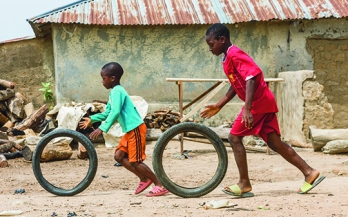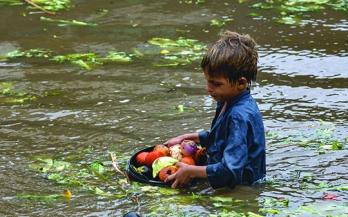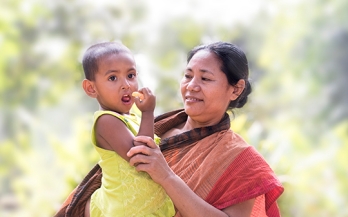Read our tenth story in the series on The Food Crisis: What's Happening, a collection of work on the current events and the impact communities are seeing on a global scale.
The Food Crisis is affecting everyone socially, economically and nutritionally. Ty Beal, Stella Nordhagen and Gina Kennedy recently attended the International Congress of Nutrition, here they write on the discourse needed to tackle the crisis
Read our ninth story in the series on The Food Crisis: What's Happening, a collection of work on the current events and the impact communities are seeing on a global scale. The Food Crisis is affecting everyone socially, economically and nutritionally. Michael Ojo and Joyce Akpata discuss newly published dire statistics on Nigeria's poverty index, and how urgent action is needed.
At the recent Codex Committee of Food Hygiene meeting that took place in late 2022, the Committee agreed to develop guidelines to improve food safety in traditional markets.
Given these complex motivations, as well as the other constraints that consumers on lower incomes often face, what can firms do to meet them? The BMR project undertook a systematic review of existing research and evidence to find out. It revealed a few core areas for focus: product, marketing, and distribution.
Read our eighth story in the series on The Food Crisis: What's Happening, a collection of work on the current events and the impact communities are seeing on a global scale. The Food Crisis is affecting everyone socially, economically and nutritionally. Aster Zewdie, Senior Policy Advisor at GAIN Ethiopia, discusses the wide reaching ripple effect the economic crisis will have on Ethiopia, affecting the most vulnerable in society, and what actions need immediate attention.
For the first time in the history of COP, food systems were put centre stage in the climate negotiations. Different pavilions and events focused on crucial aspects of the complex food systems and climate interactions.
Read our seventh story in the series on The Food Crisis: What's Happening, a collection of work on the current events and the impact communities are seeing on a global scale. The Food Crisis is affecting everyone socially, economically and nutritionally. Joyce Akpata, Head of Policy and Advocacy at GAIN Nigeria, discuss the wide reaching ripple effect the economic crisis will have on Nigeria, affecting the most vulnerable in society, and what actions need immediate attention.
Read our sixth story in the series on The Food Crisis: What's Happening, a collection of work on the current events and the impact communities are seeing on a global scale. The Food Crisis is affecting everyone socially, economically and nutritionally. Farrah Naz, Country Director at GAIN Pakistan, discuss the wide reaching ripple effect the massive flooding caused by the climate crisis will have on Pakistan, affecting the most vulnerable in society, and what actions need immediate attention.
Read our fourth story in the series on The Food Crisis: What's Happening, a collection of work on the current events and the impact communities are seeing on a global scale. The Food Crisis is affecting everyone socially, economically and nutritionally. Stella Nordhagen, our Senior Technical Specialist discusses the wide reaching ripple effect climate change will cause on out food systems and what actions need immediate attention.
Read our fourth story in the series on The Food Crisis: What's Happening, a collection of work on the current events and the impact communities are seeing on a global scale. The Food Crisis is affecting everyone socially, economically and nutritionally. Stella Nordhagen, our Senior Technical Specialist discusses the wide reaching ripple effect climate change will cause on our food systems and what actions need immediate attention.










